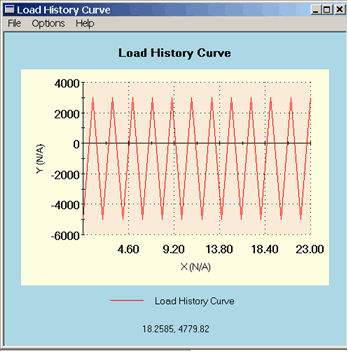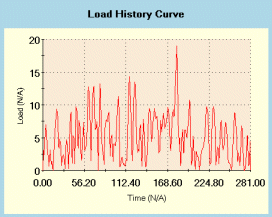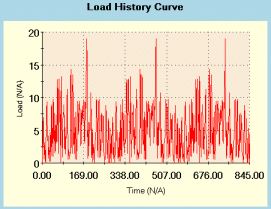The software handles two different types of fatigue events: constant amplitude and variable amplitude. You can define multiple fatigue events for a study but they have to be of the same type. The software uses the Miner's Rule and the ASME Boiler and Pressure Vessel Code to evaluate the alternating stresses and the corresponding numbers of cycles based on a number of fatigue events.
Constant Amplitude Events
All cycles of a constant amplitude event have the same alternating and mean stresses. A constant amplitude fatigue event is fully defined by an alternating stress, mean stress (or stress ratio), and the number of cycles. A fatigue event can refer to one or more static studies, or to a particular solution step from nonlinear or modal time history dynamic studies. The software calculates the worst alternating stress levels for each event.
| Example of Constant Amplitude Event
|
|---|
 |
Variable Amplitude Events
A variable amplitude fatigue event is a load history record that defines the fluctuation history of a load. The time values do not play any role for fatigue studies with a single variable amplitude event. In this case, it is adequate to define the amplitude sequence. For studies with more than one variable amplitude fatigue events, time values are needed for each record to correlate to other loading events.
| Number of Repeats
|
|---|
  |